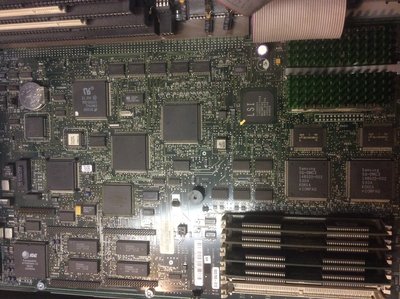First post, by Fimbulvetr
I have finally gathered up most of the components I need for my Pentium 1 build. This is going to be a dos/win 3.1 machine as I already have a nice PIII Win98se machine. So now I have to decide on which of the components I have to use.
Base machine:
As the base for this machine I have a Compaq Deskpro 575 and a DEC Digital Venturis 575. Both machines have a combination of ISA and PCI slots. I think I wil use the DEC, as the build quality is nicer, there are fewer impossible to find proprietary parts (like drive brackets) and it has a standard Award BIOS instead of that weird Compaq hidden partition BIOS. On the downside, it has a dead Dallas time clock which I have to hack or replace, only has 3 slots instead of 5 in the other machine, and the only cooling is the PSU fan which only runs when it gets warm. There is nowhere in the case to add an additional fan.
CPU:
Right now there is a P75 in the DEC. The fastest CPU it can handle is a P200. I have one of those on the way, but I’m not sure if I need to improve cooling. There is just a large aluminum heatsink on the P75. With no case fans, should I replace the heatsink with one with a fan for the P200 CPU?
Video:
The DEC has an on-board S3 Trio64 with 2 mb ram. Alternatively, I have a Matrox Millenium PCI card and a Cirrus Logic CL-GD5446 PCI card, both with 2mb of ram. I’m thinking of sticking with the on board S3.
Sound:
I have two ISA sound cards, a CT2800 Sound Blaster Vibra 16, and a ESS Audiodrive ES1868f. I think I will use the CT2800 as it has a OPL3 on it.
Hard Drive:
Many old spinning HDs in my box of parts to choose from, or a 2gb DOM I ordered. If the DOM works, I’m going with that.
RAM: the DEC has 80 mb of ram already. It can take up tp 128 mb, but that should be more than enough.
Other: the DEC has a PCI network card and I’m thinking of installing an IDE CF adaptor in one of my 3 back panel slots.
Any thoughts or advice?
